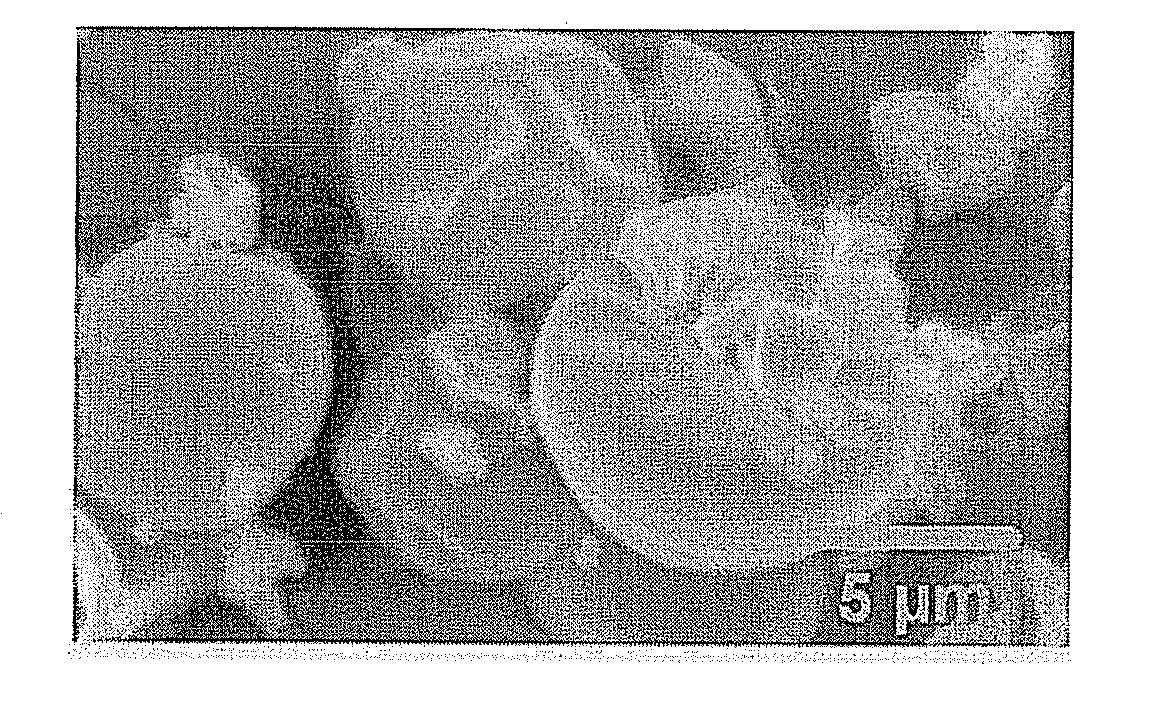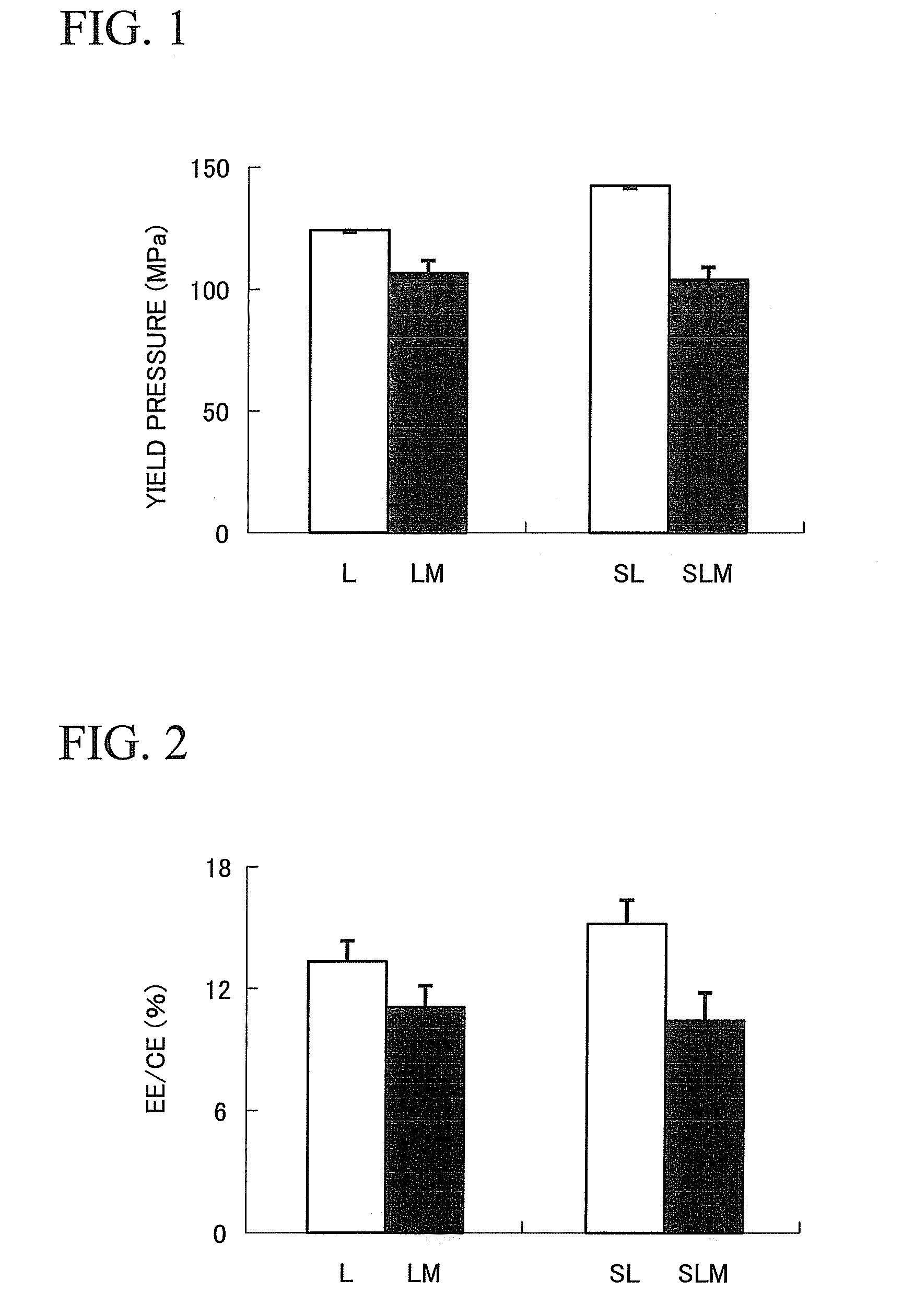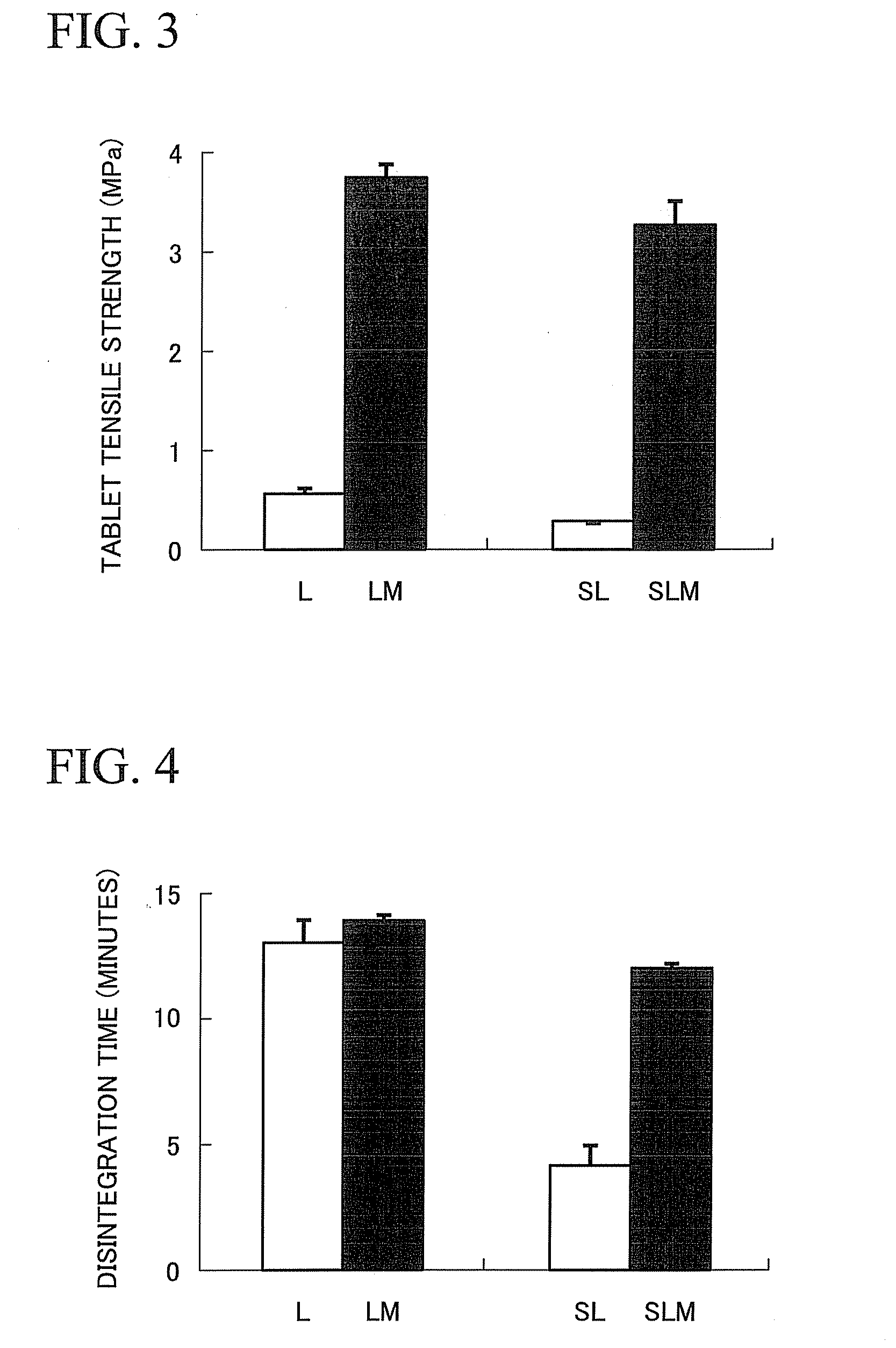Hydroxyalkylcellulose microparticles
a technology of hydroxyalkylcellulose and microparticles, applied in the field of hydroxyalkylcellulose microparticles, can solve the problems of high friability, low hardness of tablets obtained upon molding, and high hardness of tablets, and achieve the effects of reducing the fluctuation of disintegration properties caused by compression pressure fluctuations, increasing the tensile strength of solid preparations, and improving the strength of bonding
- Summary
- Abstract
- Description
- Claims
- Application Information
AI Technical Summary
Benefits of technology
Problems solved by technology
Method used
Image
Examples
example 2
[0133]With the exception of replacing the 2% aqueous solution of the hydroxypropylcellulose from Example 1 with a 2% aqueous solution of a hydroxypropylcellulose (“HPC SL” manufactured by Nippon Soda Co., Ltd., viscosity at 20° C. of the 2% aqueous solution: 3.0 to 5.9 mPa·s), hydroxypropylcellulose microparticles were obtained using the same procedure as that described for Example 1. The particle sizes D16, D50 and D84 of the microparticles were as shown in Table 2. The microparticles were slightly flattened spherical shapes. The viscosity at 20° C. of a 2% aqueous solution of the obtained hydroxypropylcellulose microparticles was the same as that of the bulk powder. The bulk powder of the hydroxypropylcellulose HPC SL had a volume-average particle size of 83.3 μm and had an angular irregular-shape.
example 3
[0134]With the exception of using 10% or 20% aqueous solutions of the hydroxypropylcellulose (“HPC L” manufactured by Nippon Soda Co., Ltd., viscosity at 20° C. of a 2% aqueous solution: 6.0 to 10.0 mPa·s), hydroxypropylcellulose microparticles were obtained using the same procedure as that described for Example 1. The particle sizes D16, D50 and D84 of the microparticles were as shown in Table 2. The microparticles had slightly flattened spherical shapes (see FIG. 14 and FIG. 15). The viscosity at 20° C. of a 2% aqueous solution of the obtained hydroxypropylcellulose microparticles was the same as that of the bulk powder.
TABLE 2Particle size [μm]D16D50D84Example 2Bulk powder HPC SL33.4 ± 1.7 83.3 ± 3.3160.6 ± 5.4 2% aqueous solution3.9 ± 0.2 7.5 ± 0.712.6 ± 2.9Example 310% aqueous solution6.1 ± 0.111.6 ± 0.723.6 ± 1.520% aqueous solution7.1 ± 0.213.9 ± 1.326.6 ± 4.9
example 4
[0135]With the exception of replacing the 20% aqueous solution of the hydroxypropylcellulose from Example 3 with a 20% aqueous solution of a hydroxypropylcellulose (“HPC SSL” manufactured by Nippon Soda Co., Ltd., viscosity at 20° C. of a 2% aqueous solution: 2.0 to 2.9 mPa·s), hydroxypropylcellulose microparticles were obtained using the same procedure as that described for Example 3. The particle sizes D16, D50 and D84 of the microparticles were as shown in Table 3. The microparticles had slightly flattened spherical shapes (see FIG. 16). The viscosity at 20° C. of a 2% aqueous solution of the obtained hydroxypropylcellulose microparticles was the same as that of the bulk powder. The bulk powder of the hydroxypropylcellulose HPC SSL had angular irregular-shapes.
PUM
| Property | Measurement | Unit |
|---|---|---|
| volume-average particle size | aaaaa | aaaaa |
| volume-average particle size | aaaaa | aaaaa |
| volume-average particle size | aaaaa | aaaaa |
Abstract
Description
Claims
Application Information
 Login to View More
Login to View More - R&D
- Intellectual Property
- Life Sciences
- Materials
- Tech Scout
- Unparalleled Data Quality
- Higher Quality Content
- 60% Fewer Hallucinations
Browse by: Latest US Patents, China's latest patents, Technical Efficacy Thesaurus, Application Domain, Technology Topic, Popular Technical Reports.
© 2025 PatSnap. All rights reserved.Legal|Privacy policy|Modern Slavery Act Transparency Statement|Sitemap|About US| Contact US: help@patsnap.com



